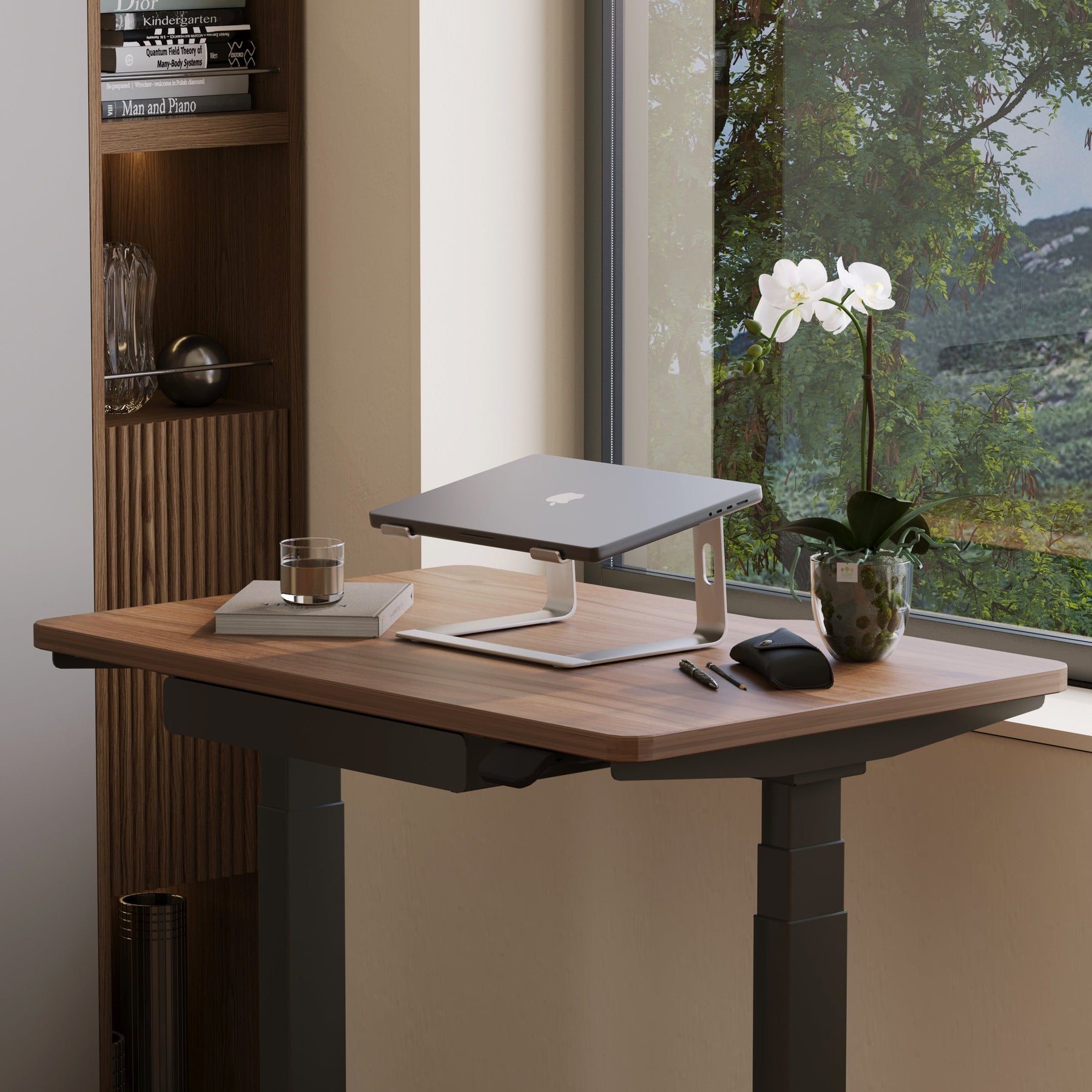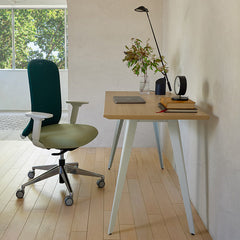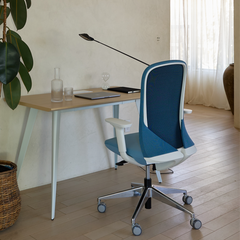Get 10% off your first order
Find the office furniture that’s designed to match your style, comfort, and needs perfectly. Subscribe
Boundary Work From Home Setup: How to Define Your Home Office Zone

Visit quiz page to see how we makes it easy to create an inspiring workplace


Working remotely offers incredible freedom, but it comes with a hidden hazard: the erosion of good ergonomic habits. Without the structure of a traditional office, many remote workers—often without realizing it—fall into poor setup routines that compromise their health, focus, and long-term productivity. That uncomfortable neck stiffness or chronic lower back ache is not just stress; it is your body telling you that your workstation is fighting against your natural alignment.
The biggest mistake is assuming comfort equals correct ergonomics. That favorite armchair might feel cozy for twenty minutes, but for eight hours, it is a recipe for musculoskeletal disaster. These subtle, cumulative errors lead to chronic pain, reduced circulation, and distraction, all of which chip away at your ability to perform deep, focused work.
Ergonomics is not a luxury; it is a vital investment in your career and well-being. The goal is to design a workspace so supportive that your body essentially disappears, leaving your mind free to concentrate fully on the task at hand. This requires moving past temporary, reactive fixes and building an intentional, body-friendly system.
The foundation of this system is flexibility. If you are serious about mitigating the risks of static posture, start with dynamic furniture. A height-adjustable standing desk is essential for modern remote work, allowing you to alternate effortlessly between sitting and standing throughout the day, improving circulation and keeping your energy elevated.
The single most common ergonomic error is sitting in the same, unsupported position for hours on end. This static posture, often characterized by a forward lean and slouching shoulders, strains the neck, shoulders, and lower back, significantly restricting blood flow and accelerating fatigue.
When you slouch, the natural S-curve of your spine reverses, compressing your lungs and reducing oxygen flow to the brain—a direct cause of the mid-afternoon slump. This chronic misalignment forces stabilizer muscles to work overtime, leading to tension headaches and long-term joint issues.
To combat the slouch effect, your workstation must encourage movement. Even when sitting, you should be making micro-movements. The best strategy involves using supportive seating that maintains the natural curve of your lumbar spine and allows for subtle shifts in weight distribution.
Postural Alignment Checklist:
☐ Feet: Flat on the floor or a stable footrest.
☐ Knees: Bent at a 90 to 100-degree angle.
☐ Elbows: Close to the body, bent at 90 degrees, level with the desk.
☐ Shoulders: Relaxed, never shrugging towards the ears.
☐ Monitor: Top edge at or slightly below eye level.
While a laptop offers portability, using it as your primary, unassisted monitor and keyboard is an ergonomic disaster. Laptops force a painful compromise: either your screen is too low (causing neck strain) or your keyboard is too high (causing wrist and shoulder strain). You cannot optimize both simultaneously on a single flat device.
To look at the screen, your neck is often bent forward for hours, leading to the condition known as "tech neck" or text neck. This sustained, awkward angle puts the equivalent weight of a bowling ball on your upper spine, causing chronic pain.
The solution is decoupling the screen and the keyboard. You must elevate the laptop screen to eye level using a stand and connect an external keyboard and mouse. This allows you to maintain the crucial neutral neck position while keeping your hands and wrists at the ergonomically correct height.
A high-quality modern office desk provides the stable, spacious surface necessary to support this multi-component setup, allowing for proper keyboard distance and comfortable monitor placement without crowding.
Many remote workers tolerate desktop clutter, believing it is merely an aesthetic problem. In reality, visual clutter is a profound ergonomic mistake because it increases cognitive load. The brain is constantly working to filter out irrelevant visual stimuli, diverting precious mental energy away from the actual work.
A messy desk creates a sense of chaos and anxiety, making it harder to initiate work and maintain focus. Every misplaced item is a minor distraction that prevents the mind from achieving the state of "flow" required for deep productivity.
Decluttering for Better Focus (Enumeration):
Clear the Primary Zone: Keep only the computer, keyboard, mouse, and a small notepad on the primary desktop surface.
Go Vertical: Utilize wall-mounted shelving or vertical organizers to store books, papers, and files, leveraging space that would otherwise go unused.
Manage Cables: Tangle-free cable management is vital; use clips or under-desk trays to hide unsightly cords that contribute to visual friction.
Daily Reset: Institute a five-minute end-of-day ritual to clear the surface, ensuring you start the next day with a clean, low-friction environment.

Inconsistent or inadequate lighting is a common ergonomic oversight that directly impacts eye health and alertness. Harsh glare or dim, yellow light forces the eyes to work harder, accelerating eye strain, headaches, and overall mental fatigue.
The ideal workspace mimics natural daylight—bright but diffuse. Working under a single, harsh overhead light or relying solely on the monitor's glow leads to uneven contrast, forcing your pupils to constantly adjust. This effort consumes a massive amount of mental energy.
Effective lighting relies on layering, ensuring balanced illumination that reduces shadows and minimizes glare.
Lighting Zones (Table):
|
Zone |
Light Type |
Purpose |
Ergonomic Benefit |
|
Ambient |
General overhead light (soft and diffuse). |
Provides basic, uniform room illumination. |
Reduces harsh shadows and contrast. |
|
Task |
Adjustable desk lamp (focused beam). |
Illuminates specific documents or keyboard area. |
Prevents eye strain during detail work. |
|
Natural |
Window light (perpendicular to the monitor). |
Regulates circadian rhythm; boosts mood. |
Increases alertness and reduces energy costs. |
Even with a perfect ergonomic chair, staying seated for eight hours straight is an ergonomic failure. The body needs regular movement to maintain circulation, lubricate joints, and prevent deep venous thrombosis. Neglecting movement breaks is perhaps the most dangerous long-term mistake.
Inactivity slows your metabolism and reduces the flow of oxygenated blood to the brain, which contributes directly to mental block and fatigue. This creates a negative feedback loop: you feel tired, so you move less, which makes you more tired.
Your work setup should actively encourage and enable movement. Setting small, non-disruptive furniture into a flexible layout can make movement easier. Even in a compact home office, you can prioritize dynamic working. A Small Standing Desk Maine provides height adjustment capabilities in a space-saving footprint, ensuring that dynamic posture is possible even in restricted living areas.
Movement Break Strategies (Bullet Points):
Set a timer to stand or stretch for 2 minutes every half hour.
Conduct quick phone calls while pacing or standing.
Use any height-adjustable feature to transition position at least twice an hour.
Keep water or coffee slightly out of reach to force short walks.
While not strictly physical, the psychological aspects of remote work are inseparable from ergonomic health. Isolation, lack of clear boundaries, and feeling obligated to be "always on" lead to chronic stress, which manifests physically as muscle tension and poor sleep.
Psychological stress causes unconscious muscle bracing, particularly in the shoulders and jaw. Over time, this chronic tension becomes musculoskeletal pain. An ergonomic setup that facilitates healthy boundaries is therefore critical. Research into the link between workplace design and mental load confirms that perceived control and environmental quality significantly impact well-being.
Many remote workers prioritize the look of their home office setup over its functionality. They might choose a beautiful fixed-height table or a stylish but unsupportive chair simply because it matches their decor. This is a critical error, as adjustability is the cornerstone of true ergonomic quality.
A fixed desk height or an unadjustable chair will only fit a narrow range of body types perfectly. Since the human body changes posture constantly, fixed furniture inevitably forces users into suboptimal positions for sustained periods, leading to discomfort. The furniture must adapt to the user, not the other way around.
Even remote workers often engage in synchronous group work, whether through video calls or in occasional co-working sessions. When designing multi-person setups, ergonomic quality must be maintained for everyone involved to avoid collective fatigue.
When accommodating more than one user, whether permanently or occasionally, the setup must allow for simultaneous, independent adjustment. A two-person standing office desk is an example of a solution that maintains individual ergonomic control—like separate height settings and ample surface area—while fostering proximity and collaboration. Sharing a fixed, non-adjustable surface doubles the potential for ergonomic compromise.
While much focus is placed on the desk, the chair is arguably the most crucial piece of furniture for a remote worker, as it directly bears the user's weight for the majority of the workday. A chair that lacks key adjustment features is a guaranteed ergonomic fault.
An excellent ergonomic chair must offer five critical adjustment points to ensure it can be customized to support your unique body contours and work style:
Seat Height: To ensure feet are flat on the floor and elbows are at desk level.
Seat Depth: To ensure the back of the knees are not pressed against the seat edge.
Armrest Height and Width: To maintain relaxed shoulders and support the elbows.
Lumbar Support: To customize the firmness and position of the lower back support.
Tilt Tension/Lock: To allow the user to recline slightly, changing posture frequently to relieve spinal pressure.
Fixing these ergonomic mistakes is not simply about avoiding pain; it is about investing in your cognitive performance. Scientific findings underscore the massive impact of a well-designed environment on attention, mood, and productivity, especially in settings lacking external supervision.
A study on work engagement and well-being highlights how factors like perceived control and job resources—including a supportive physical workspace—are critical in maintaining psychological health and minimizing burnout. When you feel physically supported and in control of your environment, your mental resources are maximized for the actual tasks at hand. Correcting ergonomic errors, therefore, is a powerful form of self-care and professional advancement.

The five common ergonomic mistakes are less about carelessness and more about a lack of awareness regarding the body's needs during intensive remote work. The takeaway is clear: your productivity is intrinsically linked to your comfort.
By moving away from static furniture, prioritizing adaptability, and eliminating the visual clutter and poor lighting that drains your cognitive reserves, you stop fighting your environment and start collaborating with it. Do not just buy a desk; design a system. This intentional upgrade to your physical setup will be the most significant upgrade to your focus and professional longevity. Start today by assessing your posture and making one key adjustment.

Boundary Work From Home Setup: How to Define Your Home Office Zone

Decoding Deep Work: The Neuroscience of Your Desktop

How to Stay Focused and Motivated While Working from Home
Get 10% off your first order
Find the office furniture that’s designed to match your style, comfort, and needs perfectly. Subscribe
Leave a comment